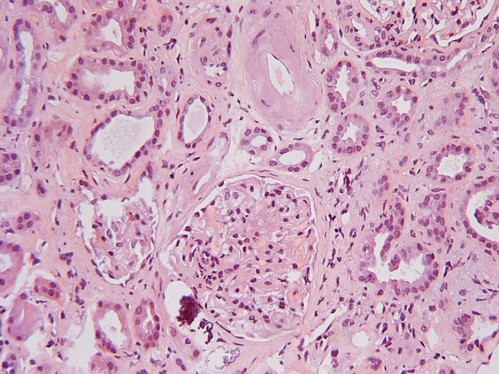
The human body is an intricate machine, capable of incredible feats, yet also susceptible to various conditions that can arise from seemingly innocuous activities or underlying health issues. While muscle soreness after a strenuous workout might feel like a badge of honor, there are crucial warning signs of muscle damage that extend far beyond typical post-exercise discomfort. Ignoring these signals, particularly those that manifest in your urine, can have severe, even life-threatening, consequences.
One such serious syndrome is rhabdomyolysis, a condition caused by excessive muscle breakdown. It occurs when muscle fibers die and release their contents into the bloodstream, posing significant risks to vital organs, especially the kidneys. Recognizing the early indicators of rhabdomyolysis and other forms of muscle damage is paramount for timely intervention and a full recovery.
This in-depth guide is designed to educate you on the critical warning signs of muscle damage, helping you understand when to seek medical attention. We will explore the various symptoms, causes, and potential complications, focusing on what your body might be telling you, starting with often-overlooked changes in your urine and progressing through other vital indicators.

1. **Rhabdomyolysis: The Severe Muscle Breakdown Syndrome**Rhabdomyolysis, often simply called “rhabdo,” is a serious syndrome stemming from excessive muscle breakdown. This condition is potentially life-threatening and occurs when muscle fibers die, subsequently releasing their cellular contents into the bloodstream. These released substances, including myoglobin, a toxic protein, can be highly damaging to the kidneys and other organs.
The causes of rhabdomyolysis can be broadly categorized into traumatic and non-traumatic events. Direct muscle injury, such as from severe burns, electrocution, or crush injuries, is a common traumatic trigger. However, the condition can also arise from indirect muscle injuries or circumstances that put severe stress on muscle tissue, highlighting its complex etiology.
When muscle cells burst, they release myoglobin and other components into the circulatory system. The kidneys are tasked with filtering these substances from the blood. However, if the volume of these waste products is too high, or if the kidneys are already compromised, they can become overwhelmed, leading to kidney damage or even acute kidney failure. Early diagnosis and treatment are crucial to prevent such severe outcomes and ensure a full recovery.

2. **Alarming Urine Color Changes: The First Visible Sign**One of the most striking and alarming warning signs of significant muscle damage, particularly rhabdomyolysis, is a noticeable change in urine color. This discoloration is not merely a cosmetic issue; it is a critical indicator that muscle protein, specifically myoglobin, has leaked into the bloodstream and is being filtered by the kidneys. This substance gives urine a distinct and unusual hue.
Individuals experiencing rhabdomyolysis may observe their urine appearing dark brown, red, tea-colored, cola-colored, or pink. This range of colors signals the presence of myoglobin, a component of broken-down muscle, which is typically not found in healthy urine. The darker the urine, generally the higher the concentration of myoglobin and thus the more severe the muscle breakdown.
It is vital to understand that while muscle pain, weakness, and stiffness are common symptoms of rhabdomyolysis, approximately half of those affected may not experience these muscle-related discomforts. Therefore, paying close attention to changes in urine color becomes an incredibly important diagnostic clue, serving as a primary indicator to seek immediate medical attention even in the absence of obvious muscle soreness.

3. **The Triad of Muscle Symptoms: Weakness, Stiffness, and Pain**Beyond the noticeable changes in urine, several direct muscle symptoms serve as critical warning signs of muscle damage. These often present as a triad of discomfort: muscle weakness, muscle stiffness, and muscle pain. While these can be common after vigorous activity, in the context of significant muscle damage like rhabdomyolysis, they tend to be more severe, persistent, and can be accompanied by other concerning signs.
Common symptoms also include muscle soreness and swelling in the affected muscle groups. These symptoms typically develop one to three days after a muscle injury has occurred, giving a short window for observation before they fully manifest. However, it’s important to remember, as mentioned, that some individuals may not experience any muscle soreness or even notice these symptoms at all, making other indicators, like urine changes, even more critical.
If these muscle symptoms are extreme, persistent, or accompanied by other signs discussed, such as dark urine, they warrant immediate medical evaluation. The severity of these symptoms can range from mild to severe, and they reflect the ongoing breakdown of muscle fibers. Recognizing this constellation of symptoms can guide timely diagnosis and treatment, potentially reversing kidney damage if caught early.

4. **Decreased Urination: A Marker of Kidney Stress**Another crucial warning sign that often accompanies significant muscle damage, particularly rhabdomyolysis, is decreased urination, medically known as oliguria. This symptom is a direct reflection of the kidneys’ struggle to process and eliminate the harmful byproducts released from damaged muscle cells. It signals that the kidneys are under immense stress and may be failing to perform their essential filtering function.
When muscle fibers break down, they release myoglobin and other substances into the bloodstream. These components are toxic to the kidney tubules, and in large quantities, they can clog the filtering units. This overwhelming load, coupled with potential dehydration, can severely impair kidney function, leading to a reduction in urine output as the kidneys struggle to maintain balance.
Decreased urination, especially when observed alongside dark-colored urine and muscle pain, is a red flag for acute kidney injury, a serious complication of rhabdomyolysis. If you notice a significant reduction in how often you urinate or the volume of urine produced, it is imperative to seek immediate medical attention. This symptom underscores the urgent need for diagnosis and treatment to protect kidney health and prevent potentially life-threatening kidney failure.

5. **Dehydration: A Silent Worsener of Complications**While dehydration itself is not a direct cause of rhabdomyolysis, its role in exacerbating the complications of muscle damage cannot be overstated. Dehydration significantly worsens the potential negative outcomes when muscle damage does occur. It acts as a silent magnifier of risk, especially concerning kidney function and electrolyte balance within the body.
When the body is dehydrated, its ability to effectively adjust to the high levels of myoglobin and potassium released from muscle cells is severely decreased. This reduced capacity to cope intensifies the potential complications, notably increasing the risk of kidney failure. Adequate hydration is crucial for the kidneys to efficiently filter waste products and maintain their overall health, making dehydration a dangerous factor in muscle injury scenarios.
Furthermore, dehydration contributes to an increased potential for heart rhythm disturbances. The altered balance of electrolytes, particularly potassium, combined with a strained renal system, can adversely affect cardiac function. Therefore, maintaining adequate hydration by drinking enough fluids, especially water, is a simple yet profoundly effective preventative measure and an important management strategy when muscle damage is suspected or occurring. It helps the body manage the internal chemical environment more effectively.

6. **Extreme Exertion and Exercise: Pushing the Body Too Far**One of the most common causes of rhabdomyolysis, especially in individuals who are otherwise healthy, is extreme, prolonged exertion or exercise. While physical activity is generally beneficial, pushing the body beyond its limits, particularly without proper preparation, can lead to significant muscle damage and the subsequent development of this serious condition. It’s a risk that many fitness enthusiasts and new exercisers might unknowingly face.
Muscle damage can occur in people who embark on new exercise programs with intense workouts right from the start, instead of gradually increasing the amount and length of the activity. The body needs time to adapt to new stresses, and an abrupt, high-intensity introduction can overwhelm muscle fibers, leading to their breakdown. This is particularly true when the body is unaccustomed to the specific activity or has not trained adequately for the demands placed upon it.
Moreover, the risk of rhabdomyolysis from exertion is significantly heightened when exercise takes place in conditions of high heat and humidity. Factors that limit the body’s ability to cool itself, such as restrictive clothing or certain medications that impair sweating, further compound this danger. To prevent such muscle injuries, it is crucial to phase your return to exercise, start slowly, stay hydrated, and ensure adequate rest periods between workouts.
Continuing our in-depth exploration, it’s vital to recognize that muscle damage extends beyond exercise-induced issues. Various external forces and internal conditions can also lead to serious muscle breakdown and its associated risks, demanding our careful attention and prompt action. Understanding these additional causes and complications is key to safeguarding your health.

7. **Traumatic Injuries: When External Forces Harm Muscles**Direct muscle injury is a significant cause of rhabdomyolysis, stemming from various traumatic events that inflict physical harm. These injuries can damage muscles directly, or they can compromise their blood supply, leading to muscle tissue death and the release of harmful substances into the bloodstream. Recognizing these potential scenarios is crucial for early intervention.
Traumatic events commonly associated with muscle damage include severe burns, electrocution, and crush injuries. Prolonged immobility, such as when an individual is trapped or lying unconscious on a hard surface for an extended period, can also cause long-lasting muscle compression and subsequent damage. These scenarios highlight the diverse ways external forces can initiate the breakdown process.
In addition to the immediate muscle damage, severe injuries like falls or motor vehicle crashes can also directly injure the kidneys or bladder. Such trauma can result in internal bleeding, further complicating the body’s ability to filter waste and maintain health. Prompt medical evaluation after any severe injury is therefore essential, not only for visible wounds but also for potential underlying muscle and organ damage.

8. **Medications and Substances: Hidden Triggers for Muscle Breakdown**Beyond physical trauma, certain medications, poisonings, and drug abuse can unexpectedly trigger muscle breakdown, leading to conditions like rhabdomyolysis. It’s a critical reminder that what we ingest can have profound effects on our muscular and renal systems, often without obvious initial signs. Awareness of these potential side effects is key to prevention and early detection.
Several classes of prescription drugs have been linked to muscle breakdown. These include antipsychotics, antidepressants, and antiviral medications. Even commonly used cholesterol-lowering drugs, known as statins, particularly those prescribed for diabetes or liver disease, carry a slightly elevated risk. Amphetamines, often used for ADHD, also fall into this category, underscoring the importance of discussing all medications with your healthcare provider.
If you are taking any prescription drugs and notice symptoms of rhabdomyolysis, such as muscle pain, weakness, or dark-colored urine, it is imperative to consult your doctor immediately. They may recommend adjusting your dosage, exploring alternative treatments, or in severe cases, discontinuing the medication. Prompt communication with a healthcare professional can prevent more serious complications like acute kidney injury, emphasizing the need for vigilance regarding medication side effects.

9. **Systemic Factors: Electrolyte Imbalances and Infections**The body’s internal environment plays a critical role in muscle health, and imbalances or widespread issues like infections can profoundly affect muscle integrity. Systemic factors, including electrolyte abnormalities and various types of infections, are recognized non-traumatic causes of rhabdomyolysis and can lead to significant muscle damage if not addressed.
Electrolyte abnormalities, such as high levels of potassium released from damaged muscle cells, can be particularly dangerous. Dehydration, as discussed previously, exacerbates the body’s inability to manage these elevated electrolyte levels, increasing the risk of kidney failure and heart rhythm disturbances. Medical emergencies causing prolonged muscle contractions, such as seizures or delirium tremens, can also contribute to electrolyte shifts and muscle breakdown.
Infections are another significant systemic trigger. While urinary tract infections (UTIs) and kidney infections are primarily associated with blood in the urine, severe systemic infections like hepatitis and babesiosis can also cause urine to darken, often signaling a broader impact on body systems, including muscles. Timely diagnosis and treatment of any infection are crucial to prevent widespread systemic stress and potential muscle damage.
Staying informed about your body’s signals is a powerful tool in maintaining your health. Recognizing these crucial warning signs of muscle damage, especially those that manifest in your urine, empowers you to act swiftly and seek medical help when necessary. Never ignore persistent symptoms; your body provides valuable clues, and early intervention can make all the difference in preventing severe complications and ensuring a full recovery. Prioritize your well-being by listening to what your body is trying to tell you.



